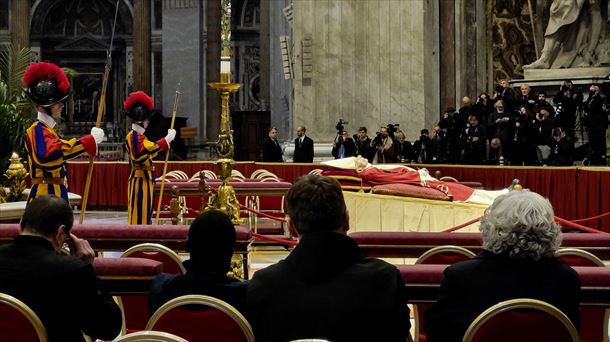Benedict XVI dies: 3 keys to an unprecedented State Funeral
- Emmanuel González
- Governmental Travels
- Hits: 1525
The recent death of the Pope Emeritus of the Catholic Church, Joseph Ratzinger, better known by his pontifical name Benedict XVI, on December 31, 2022, has marked a new historical event in the history of the West and of the Catholic Church, since It will be the first funeral of a Pope officiated by another Pope: Francis I.
The Vatican State, due to its own characteristics, works de facto as an elective monarchy, in which the next Head of State is chosen by the highest-ranking authorities of the Catholic Church. This tradition is an inheritance, in the first instance, from the Roman Empire and, later, from medieval monarchies such as the Visigoths, the Byzantines or the Polish.

Regardless of the importance that the death of a Pope entails at the international level, even in countries and territories whose majority confession is not Catholic, it is important to bear in mind that, for practical purposes, it is the death of a Head of State and this implies a series of elements in which governmental and institutional authorities from all over the world participate (as well as the exercise of a strict ecclesiastical protocol).
- The protocol: a fundamental issue.
In all countries of the world, the death of a Head of State entails a series of solemn acts and protocol elements that vary according to the type of government that exists, the culture, tradition, devotion and religion that is professed.
In the case of the Catholic Church, which is governed by the so-called Roman Ritual, three days of burning chapel are established, which can be accessed by both authorities and faithful from all over the world. This means that the burial of a Pope can never take place before four days after his death, nor beyond the sixth day.
The funeral, therefore, will take place on January 5 at 9:30 AM, local time in Rome, and in contrast to other pontifical funerals, it will be a sober burial, in the crypt of the Basilica of Saint Peter and, specifically, in the same tomb as Pope John Paul II.
- No institutional changes: there will be no white smoke for the first time in five centuries
Benedict XVI has passed away but there will be no institutional change of any kind within the Vatican State. There will be no election of a new Pope, so governmental, institutional and religious authorities around the world will not have to have an audience with a new Pope. Nor will there be significant changes in the Vatican's foreign relations with other countries, since the government of Francis I will remain intact.

- An important deployment of security: visits by governmental, institutional, religious and faithful delegations will visit the Vatican from all over the world.
The death of Benedict XVI (German origin), has led to three official delegations at the head of his funeral:
- In the first instance, the Vatican, headed by Pope Francis I, who will be in charge of officiating the funeral..
- In the second instance, the Government of Italy, represented by Giorgia Meloni (Prime Minister) and Sergio Mattarella (President of the Republic of Italy). This is because, despite being an independent state, the Vatican is not only located in Italy but, in many ways, depends on Italy for its proper functioning.
- In third instance, from the Government of Germany, due to the German origin of the deceased.
In addition, important and large delegations from around the world will attend, especially headed by heads of state, heads of government, foreign affairs ministers and religious leaders, including those of faiths other than Catholicism. For the moment, the following authorities have been confirmed: Queen Emeritus Doña Sofía, the Spanish Ambassador to the Holy See, Isabel Celaá, the Minister of the Presidency of Spain, Félix Bolaños, the President of Italy, Sergio Mattarella, the President of Hungary, Victor Orban, the President of Poland, Andrzej Duda, the King of Belgium, Felipe I, the President of Portugal, Marcelo Rebelo de Sousa and even a delegation from the Orthodox Patriarchate of Constantinople.

This important meeting of authorities will also have a massive gathering of faithful in Saint Peter's Square, in the Vatican. The death of Pope John Paul II brought together more than a million people in this place, which has led both Italy and the Vatican to organize, in just days, a very extensive security protocol.
More than a thousand police and military officers will be present in the vicinity of St. Peter's Square and throughout Rome. For most of the day the airspace in the city will be closed, and some 500 volunteers will support the security forces and bodies in their control and assistance tasks.



